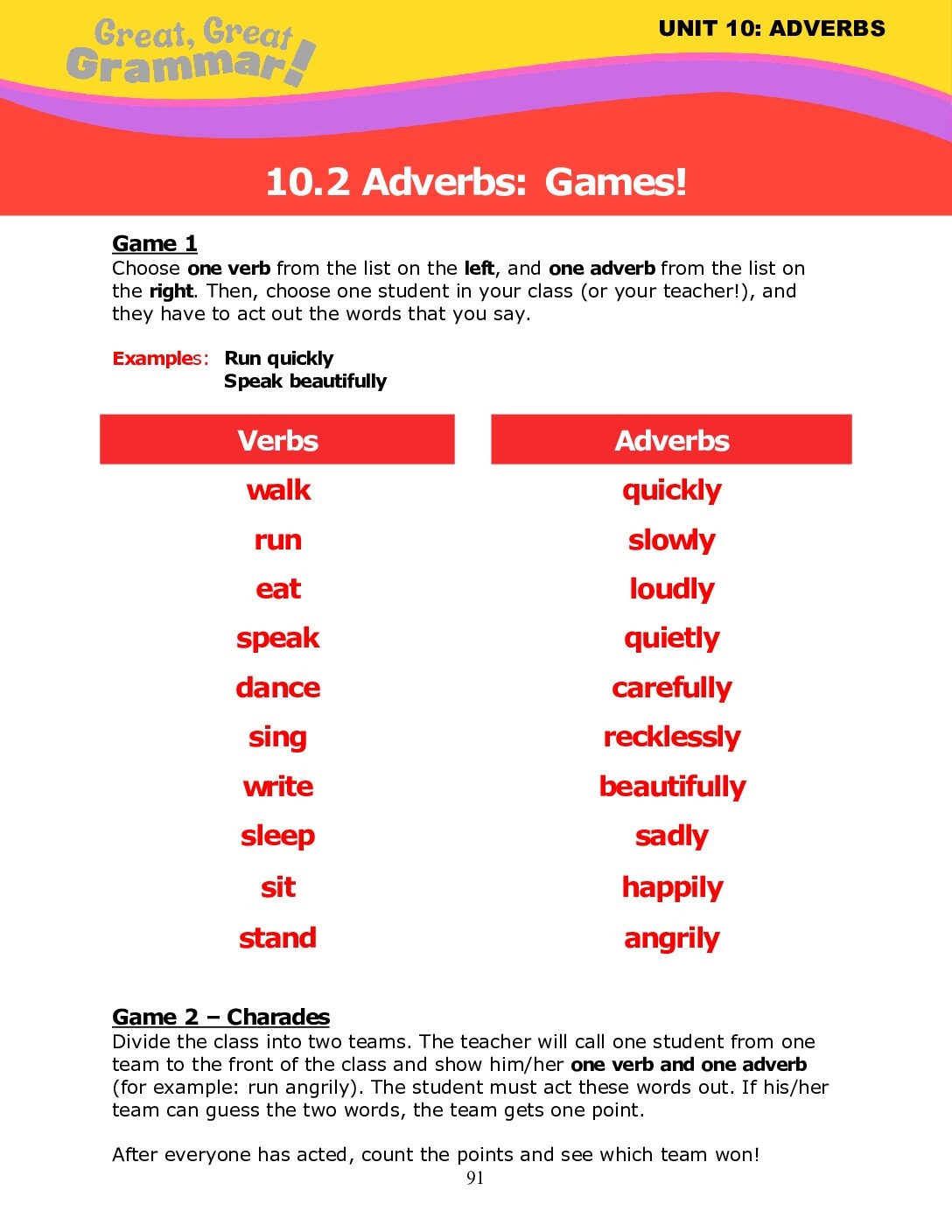Adverbs and verbs are essential components of any sentence. They play a crucial role in conveying the action, mood, and intensity of the words used. Understanding how to use adverbs and verbs effectively can greatly enhance the quality of your writing.
Verbs are the backbone of any sentence. They are the action words that express what is happening in a sentence. Without verbs, a sentence would lack the necessary action and would not make sense. Verbs can be used in various tenses, moods, and forms to convey different meanings and emotions.
Adverbs and Verbs
Adverbs are modifiers that provide more information about verbs, adjectives, or other adverbs in a sentence. They can indicate how, when, where, or to what extent an action is performed. Adverbs help to add depth and detail to the verb, making the sentence more descriptive and engaging.
When using adverbs and verbs in writing, it is important to choose them carefully to ensure clarity and precision. Using adverbs sparingly and selecting strong verbs can make your writing more impactful and concise. Avoiding overuse of adverbs ending in -ly can also help create a more polished and professional writing style.
Adverbs can also be used to modify adjectives or other adverbs, adding nuance and specificity to the description. By using adverbs effectively, you can paint a vivid picture for your readers and evoke a particular mood or atmosphere in your writing. Verbs, on the other hand, provide the necessary action and movement in a sentence, driving the narrative forward and engaging the reader.
In conclusion, adverbs and verbs are essential elements of writing that help to convey meaning, emotion, and action. By understanding how to use adverbs and verbs effectively, you can enhance the quality of your writing and engage your readers more effectively. Remember to choose your adverbs and verbs carefully, and use them thoughtfully to create powerful and engaging sentences.
